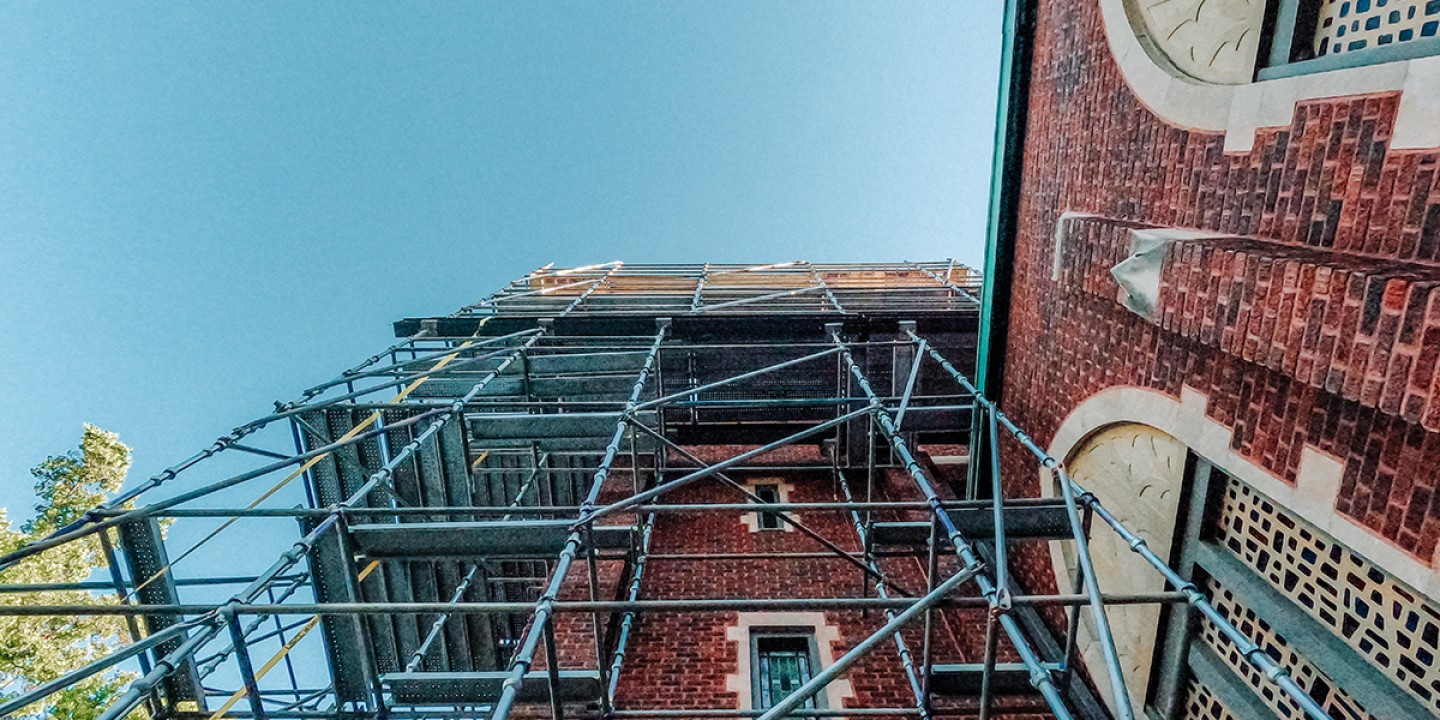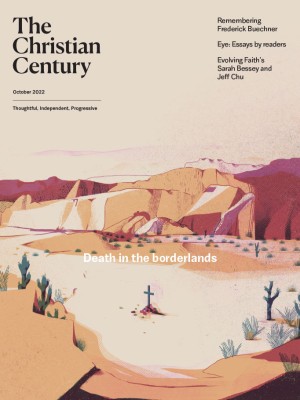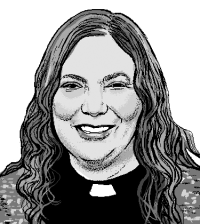A church undergoes structural change
The ELCA is about to gather for a national assembly. There are friends trying to dig through the roof to open a way for those who have been left out.

The sledgehammer breaking down walls outside the office wrecks my plans for the morning. Mercifully it stops. Then the jackhammers double down. Such is life in a construction zone.
In the 1950s, a pastor built a projection booth in our church basement, optimistically called “the undercroft.” Decades later, the booth became a food pantry. Now the structure is being demolished to provide room for new and accessible bathrooms while our former bathrooms become an enlarged pantry.
The entire undercroft is in the throes of a gut renovation. Down comes a stage to create more space for shelter beds, along with new windows, doors, floors and a sprinkler system. It looked amazing on paper, but the architectural plans don’t say anything about workers breaking a city water main or three months of work stretched to nine months of chaos in a building that needs to continue to function, providing shelter for queer young people who are now displaced again, having to move upstairs to the sanctuary during construction. Dust rises like toxic incense filling the sanctuary air.
Read our latest issue or browse back issues.
Every book in my office is covered in dust. The grit on my desk and plants makes me wonder about lungs—mine and those of others who breathe here, day and night. Are masks amassed for COVID a match for this mix of drywall dust, metal shavings, and whatever’s now loosed from century-old concrete? Humans aren’t the only creatures disturbed and displaced. What was the plan for the newly homeless mice and rats shaken from their secret burrows?
The digging and demolition make me wonder about a day back in Capernaum. We have the story in Mark and Luke. So many people show up to see Jesus that it is standing room only in the synagogue. Then our attention is drawn to the plight of a paralyzed man. His friends “found no way to bring him in because of the crowd.” These days most of us would love to see such a crowd gathered around Jesus, but the way this crowd has positioned itself is blocking the path of others. From their viewpoint, things are great! They are basking in the warmth of Jesus’ attention and their own fellowship, but they have their backs to the paralyzed man and his friends.
If the four friends of the paralyzed man looked at the numbers preventing access and left, the story would end there. But these friends do something unexpected: “they removed the roof above him, and after having dug through it, they let down the mat on which the paralytic lay.” The friends engage in some building alterations. Demolition. Noise. Dust.
What does the crowd think about this structural change? We’re not told, but we can guess. It is uncomfortable, disruptive, and costly. Property destruction! And who is going to clean up?
But that’s all part of structural change. What structures in our churches must change in order to become open to those beyond our ministry’s present line of sight? A change in physical structures? A change in decision-making structures? A change in cultural structures? All of the above?
As I write this, my denomination, the Evangelical Lutheran Church in America, is about to gather for a national assembly. There are friends trying to dig through the roof to open a way for those who have been left out. Multiple resolutions and memorials are proposed. They seek a new constitution to help the ELCA “reorganize quickly to meet the changing realities for effective mission in today’s world” and “to atone and make amends for the ways that the ELCA has been complicit in trauma and harm as well as actively dismantle racism in our systems.” And the ELCA is not the only denomination dealing with such structural injustices.
In view of this, I have been rethinking the identity of the paralyzed man. Maybe the man prone on his mat is our denominational body, or yours, and before that body can stand up and walk, there needs to be lament for sin, repentance, and structural change. Friends of the church, hopefully more than four of them, are courageously digging in to demolish and dismantle the ceiling on possibilities. Dust flies. The Gospel crowd has no choice in the matter, but our assemblies do. We can use our present structures to resist. I’ve seen Robert’s Rules of Order weaponized to flood the floor with points of order so that voices calling out racism are timed out and silenced. And there are always financial constraints.
It’s telling that the location for demolition in Capernaum is the roof, a site often named in prophetic texts as the locale of idolatry. (“The Chaldeans who are fighting against this city shall come, set it on fire, and burn it,” says Jeremiah 32:29, “with the houses on whose roofs offerings have been made to Baal and libations have been poured out to other gods, to provoke me to anger.”)
Because of our own rooftop idolatry, the ceiling on what we will tolerate, some of our prophets say it will all come burning down. And they may be right. It may be too late for structural changes to a rotted structure. I can’t foresee what we’ll be looking at a month or two from now when the dust settles from our upcoming assembly, much less in the years ahead.
In my little corner of the church, we considered a complete teardown and new build, but zoning issues made it unworkable. Maintaining space for those with no safe space was essential, even though it’s unclear how we will pay for it all.
Ariyana is a transgender woman from south of the border who lived through the upheaval in our undercroft. It was nothing compared to what she experienced at the hands of her family and, more recently, from guards at Rikers. But after long days at her job followed by work on her lawsuit with the pro bono legal team we collaborate with, coming back to dust and disruption just added to her stress.
Then came the big reveal. Whether you call it a basement, undercroft, refuge, or sanctuary, it’s now bright and welcoming with sparkling bathrooms, new flooring in place of pockmarked concrete, and the columns holding up the church painted in jeweled rainbow hues.
The look on Ariyana’s face made it all worthwhile. I imagine it reflected the elation that day in Capernaum when all were seized by amazement, saying, “We have seen incredible things today.” To my eyes, it’s a mini-vision of unseen possibilities for the church. If we’re willing to pick up the sledgehammers.






